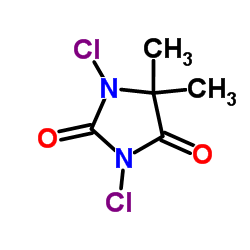Evaluation of neutralized chemical agent identification sets (CAIS) for skin injury with an overview of the vesicant potential of agent degradation products.
E J Olajos, C T Olson, H Salem, A W Singer, T L Hayes, R G Menton, T L Miller, T Rosso, B MacIver
文献索引:J. Appl. Toxicol. 18(6) , 409-20, (1998)
全文:HTML全文
摘要
Vesication and skin irritation studies were conducted in hairless guinea-pigs to determine the vesicant and skin irritation potential of chemically-neutralized Chemical Agent Identification Sets (CAIS). The CAIS are training items that contain chemical warfare-related material--sulfur mustard (HD), nitrogen mustard (HN) or lewisite (L)--and were declared obsolete in 1971. Animals were dosed topically with 'test article'--neat HD, 10% agent/chloroform solutions or product solutions (waste-streams) from neutralized CAIS--and evaluated for skin-damaging effects (gross and microscopic). Product solutions from the chemical neutralization of neat sulfur mustard resulted in microvesicle formation. All agent-dosed (HD or agent/chloroform solutions) sites manifested microblisters as well as other histopathological lesions of the skin. Waste-streams from the neutralization of agent (agent/chloroform or agent/charcoal) were devoid of vesicant activity. Cutaneous effects (erythema and edema) were consistent with the skin-injurious activity associated with the neutralizing reagent 1,3-dichloro-5,5-dimethylhydantoin (DCDMH). Chemical neutralization of CAIS was effective in eliminating/reducing the vesicant property of CAIS containing agent in chloroform or agent on charcoal but was inefficient in reducing the vesicant potential of CAIS containing neat sulfur mustard.
相关化合物
| 结构式 | 名称/CAS号 | 分子式 | 全部文献 |
|---|---|---|---|
 |
1,3-二氯-5,5-二甲基海因
CAS:118-52-5 |
C5H6Cl2N2O2 |
|
a-Chlorination of Acetophenones Using 1, 3-Dichloro-5, 5-Dim...
[Synth. Commun. 36(2) , 255-8, (2006)] |
|
Oxidation of urazoles with 1, 3-dihalo-5, 5-dimethylhydantoi...
[Synlett 5 , 761-4, (2005)] |
|
Introduction of 3'-terminal nucleosides having a silyl-type ...
2009-04-03 [J. Org. Chem. 74(7) , 2817-23, (2009)] |
|
[Hygienic standard for dichlorantin and its transformation p...
1982-06-01 [Gig. Sanit. (6) , 76-8, (1982)] |
|
[Hygienic evaluation of the possible use of 1,3-dichloro-5,5...
1982-03-01 [Gig. Sanit. (3) , 11-3, (1982)] |